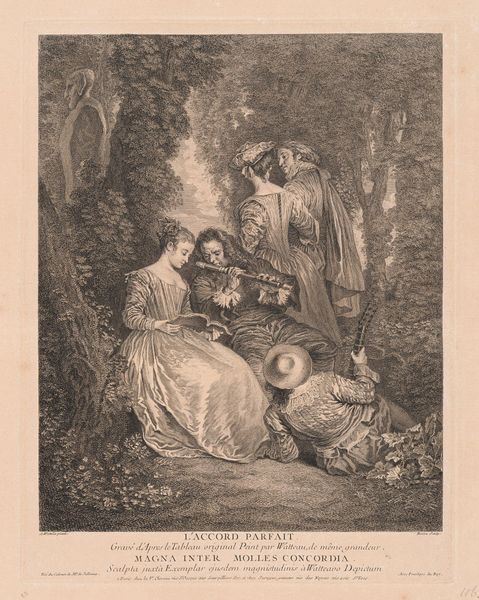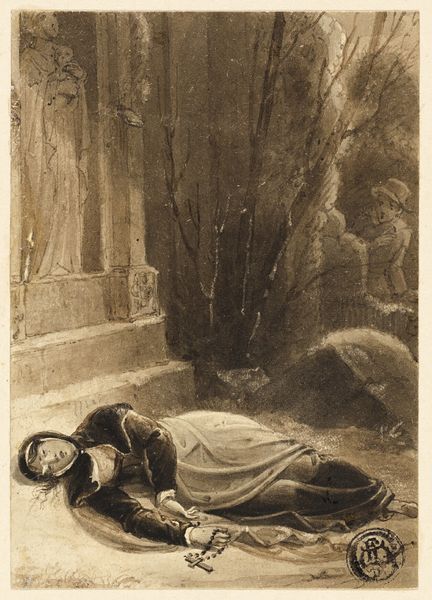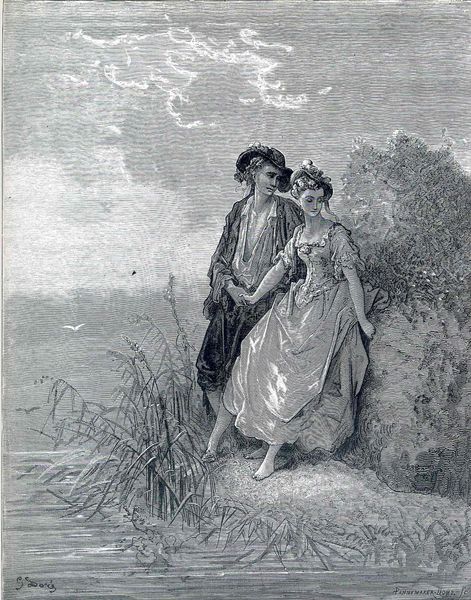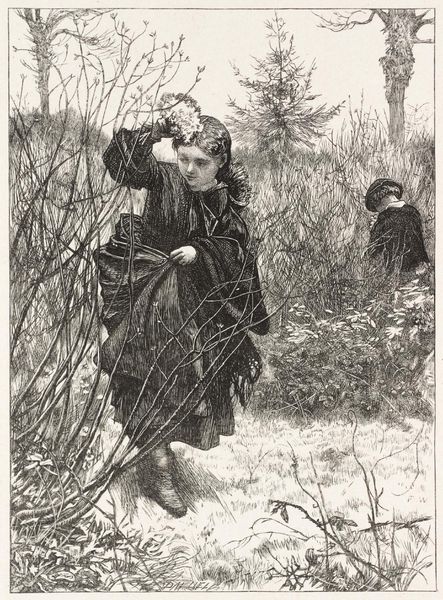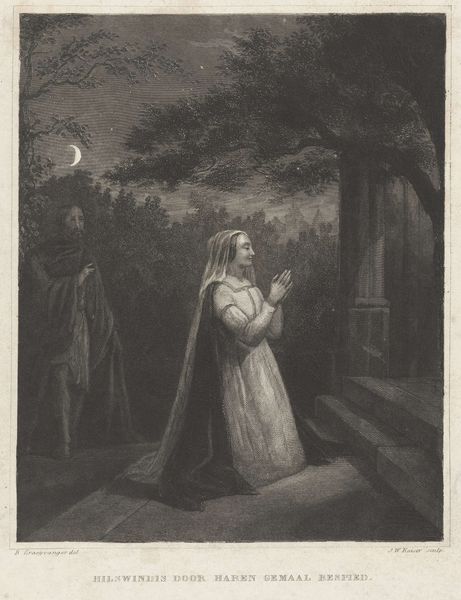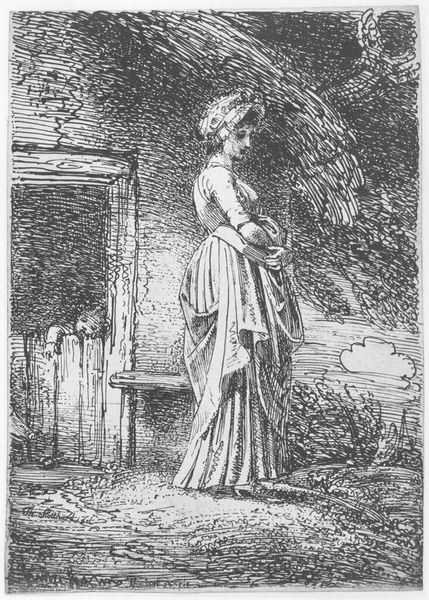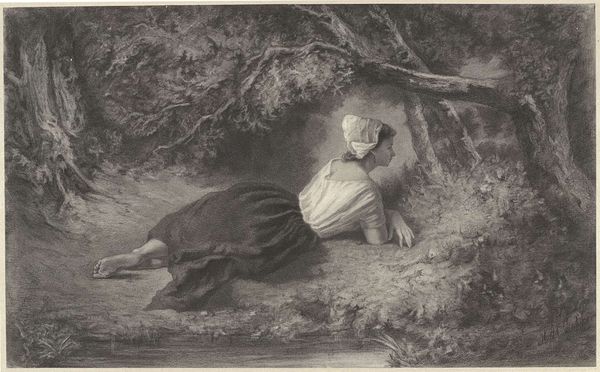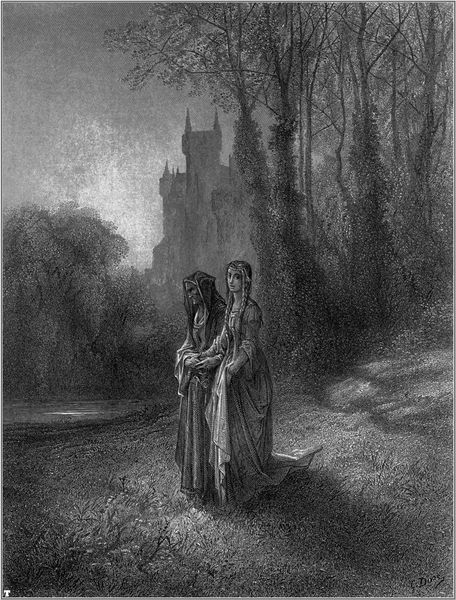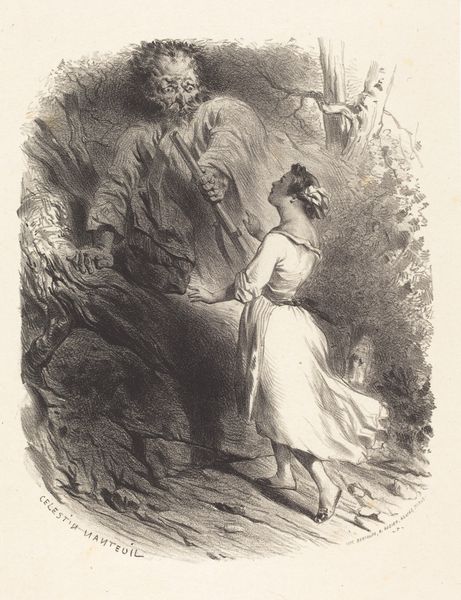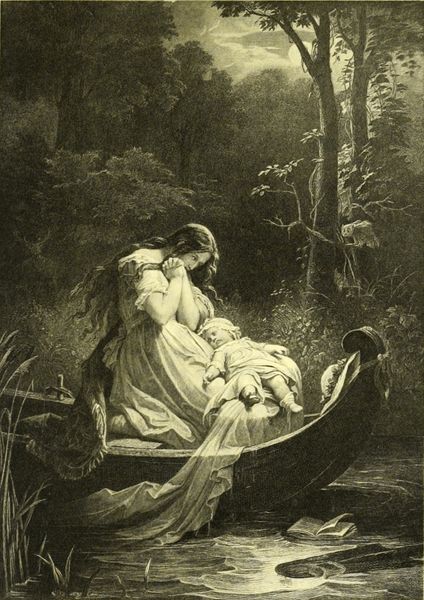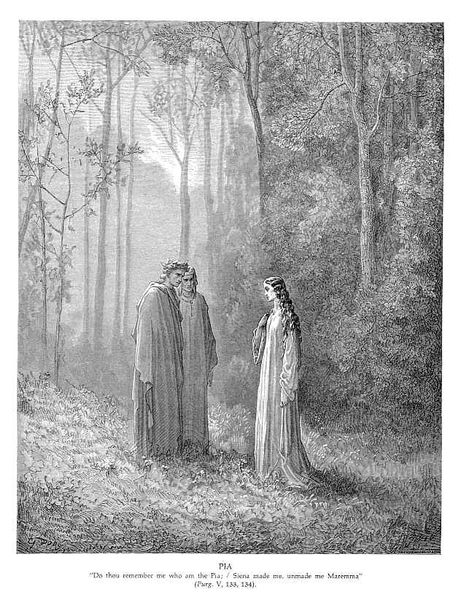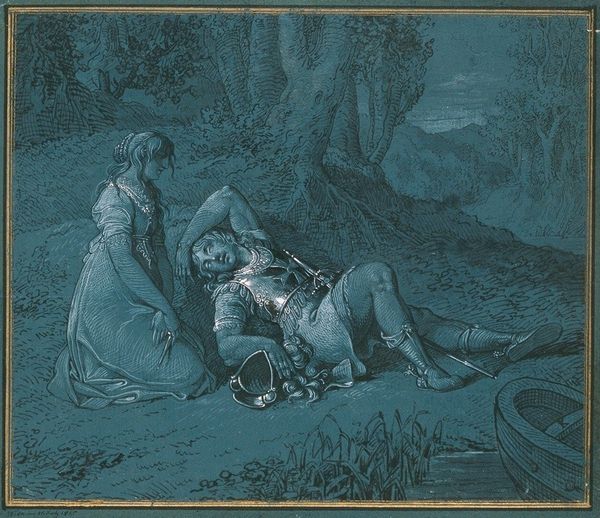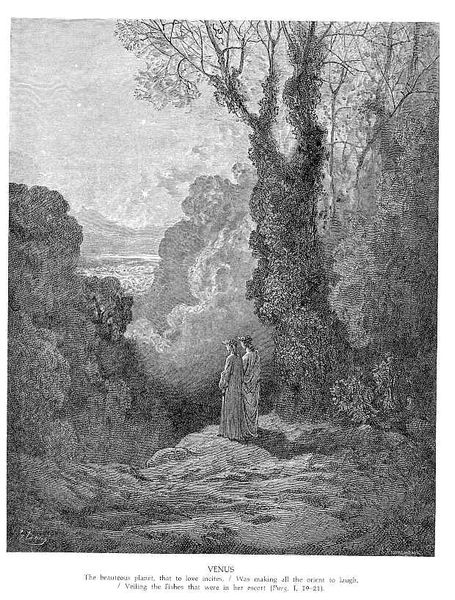
drawing, paper, ink
#
drawing
#
narrative-art
#
pencil sketch
#
landscape
#
charcoal drawing
#
paper
#
ink
#
romanticism
#
genre-painting
Copyright: Public domain
Editor: This is Gustave Dore’s illustration for "The Milkmaid and the Milk Can." It appears to be an ink and paper drawing. There's a wistful mood here. A young woman stands near a spilled milk can, a very Romantic vision of rural life and labor. What do you see in this piece? Curator: The broken milk can speaks volumes, doesn’t it? Dore, working within a patriarchal structure, likely used this familiar fable to explore the limitations placed upon women, especially those of lower socio-economic status. He illustrates the cruel realities of dashed hopes and unrealized dreams. Consider how the woman's posture—her bowed head, her averted gaze—communicates a profound sense of dejection and lost opportunity. What societal narratives do you think Dore is engaging with here? Editor: So it's not just about the fable, but about the larger social position of women at the time? I hadn't thought of that. Curator: Precisely. Look at the details – her simple dress, the desolate landscape. Dore highlights the precariousness of her existence. The milk spilling represents more than just lost milk; it symbolizes a waste of her time, effort, and potential. He prompts us to reflect upon the social forces at play and consider how structures of power influence the individual experience, especially for those on the margins. Does knowing this change how you perceive the image? Editor: It does. It adds a layer of critique. It makes me think about the systems that keep people down, then and now. Curator: Exactly. Dore’s art isn’t merely illustrative; it is an invitation to examine those very systems. The broken milk can isn’t just a visual detail, it becomes a symbol of inequality. Editor: I see it now. The seemingly simple illustration opens up this whole dialogue about social and economic realities. Thank you!
Comments
No comments
Be the first to comment and join the conversation on the ultimate creative platform.
